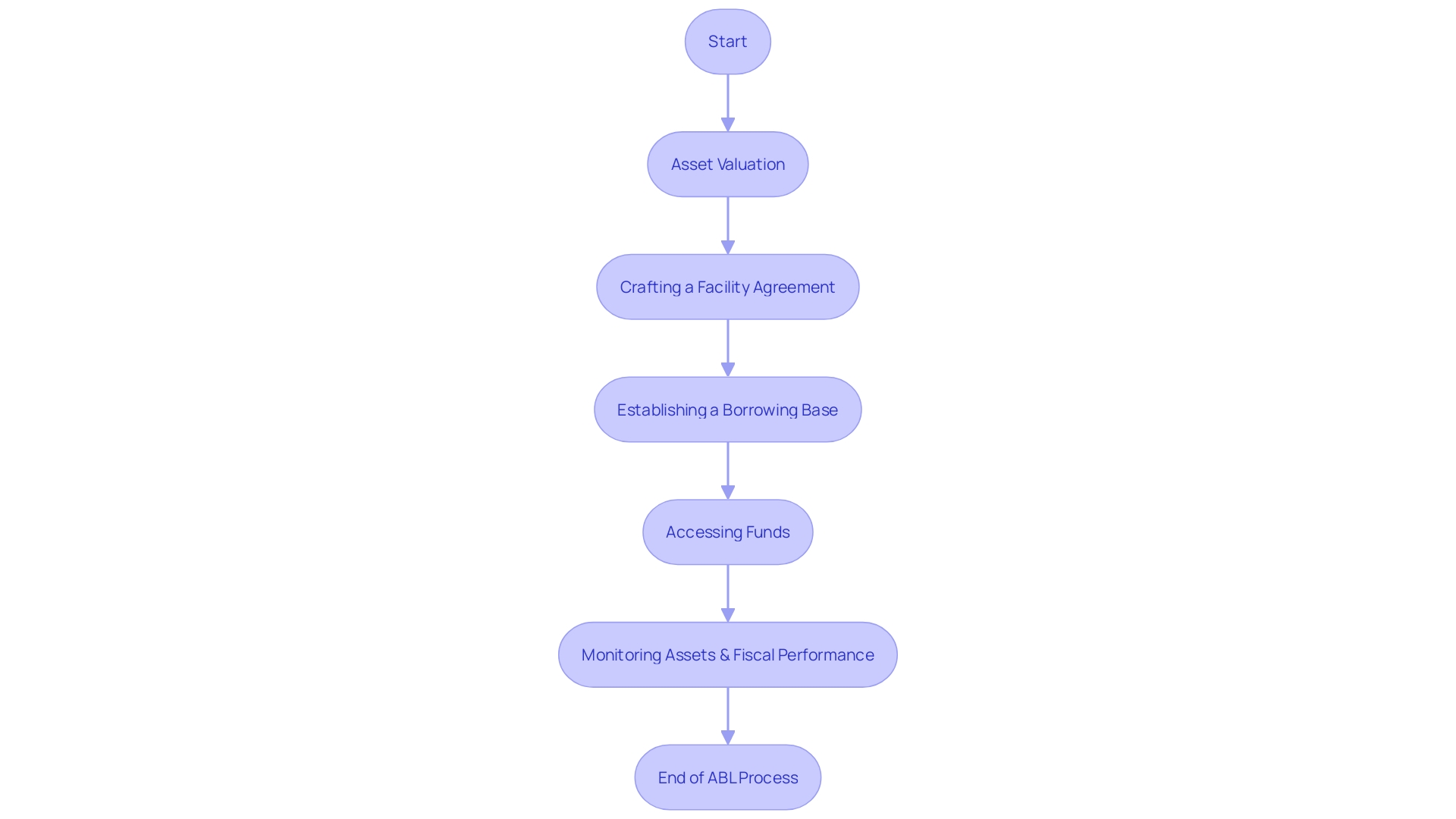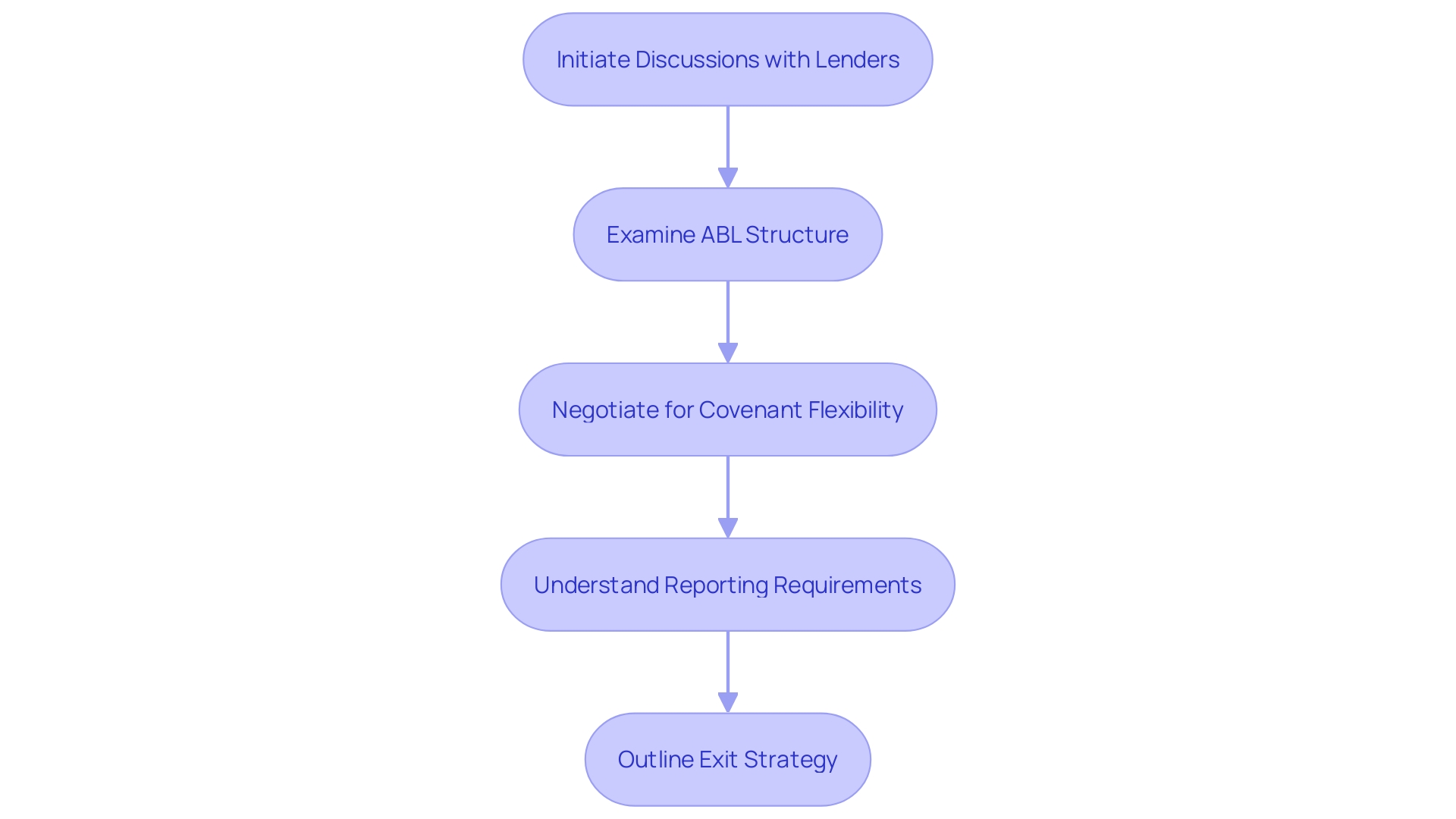Introduction
Asset-based lending (ABL) is a financing option that allows businesses to leverage their assets, such as accounts receivable, inventory, and equipment, as collateral. Unlike traditional loans, ABL focuses on the value of the borrower's assets rather than their credit rating, offering a flexible and agile financing solution. In this article, we will explore the various types of assets used in ABL, the process of how ABL finance works, the benefits it offers to businesses, its applications across different industries, key practical and legal considerations, negotiating ABL facilities, risk management and controls, and a comparison with other forms of finance.
Whether you are a CFO looking for practical advice or a business owner seeking solutions, this article will provide you with valuable insights to navigate the complexities of ABL finance and make informed financial decisions.
What is ABL Finance?
Asset-based lending (ABL) is a financing option that leverages a company's assets, such as accounts receivable, inventory, and equipment, as collateral. This approach offers a lifeline to businesses seeking working capital or funds for expansion plans. ABL differs from traditional loans in that it emphasizes the value of the borrower's assets rather than their credit rating, offering a more flexible and agile financing solution.
The Secured Finance Network, with its roots going back to 1944 and a network of over 1,000 members globally, champions the cause of organizations that provide and support secured financing to businesses. This reflects the critical role ABL plays in enabling companies to harness the power of their assets to fuel business operations and growth.
In a dynamic business landscape, organizations like AFFIN Group in Malaysia, symbolized by the modernized Bunga Raya in their logo, attest to the importance of secured lending. They stand as an emblem of commitment to delivering value through robust financial services and corporate governance, fostering close ties with customers, shareholders, and employees.
Furthermore, in the realm of clinical trials, companies often face the challenge of securing funding on reasonable terms, with risks such as production scalability and regulatory approval hurdles. This mirrors the broader context where businesses may struggle to obtain traditional financing, underlining the significance of alternative funding routes like ABL.
Moreover, installment loans, a type of closed-end debt, offer a contrast to ABL as they are repaid over a set term and do not permit reuse of credit, unlike revolving credit lines. Secured loans, on the other hand, require collateral, which can be claimed by lenders in case of default, a risk that ABL can mitigate by focusing on the liquidity of the underlying assets.
According to the Secured Finance Network, the integration of financial services into non-financial businesses, or 'embedded finance', is gaining traction, presenting a lucrative opportunity for tech companies. This comes at a time when community banks are witnessing shrinking revenues, highlighting a shift in the financial landscape where asset-based solutions like ABL are becoming increasingly relevant.
In conclusion, asset-based lending stands out as a strategic financial tool that offers adaptability and access to capital based on asset values, helping businesses navigate the complexities of modern finance and maintain competitive edge.
Types of Assets Used in ABL
Asset-based lending (ABL) offers a potent financial solution for companies by leveraging their own assets to secure necessary funding. The collateral, serving as a firm pledge to lenders, comes in various forms, each with its intrinsic value and role within the financing framework. Accounts receivable, representing outstanding invoices owed by customers, are a liquid asset and can often be quickly converted into cash, making them particularly attractive to lenders. Inventory, encompassing raw materials, work-in-progress, and finished goods, reflects the operational health of a business and its potential for future revenue. Equipment, such as machinery and vehicles, although less liquid, provides a tangible guarantee of value. Lastly, real estate, often considered a high-value asset, secures larger loans due to its significant worth.
Understanding the intrinsic value of these assets is crucial, as lenders typically require collateral that offsets the full amount of the loan, ensuring a balanced risk. The valuation not only determines the borrowing capacity but also influences the terms of the loan, including interest rates and repayment schedules. In fact, offering robust collateral can be particularly beneficial for businesses with less-than-perfect credit, as it provides lenders with the necessary security to extend credit more confidently. Moreover, the Secured Finance Network, a global association with a rich history since 1944, underscores the importance of secured financing in empowering businesses. By harnessing their assets effectively, companies can unlock financial opportunities to fuel their growth and navigate the complexities of modern finance.
How ABL Finance Works
Asset-Based Lending (ABL) is a sophisticated financial strategy that allows companies to harness the power of their assets to secure necessary funding. The process begins with a thorough valuation of the company's collateral assets by the lender, which sets the stage for the maximum financing they can offer. A legally binding facility agreement is then crafted, detailing the financing terms between the lender and the business. The borrowing base is subsequently established, anchored on a fixed percentage of the appraised worth of the eligible assets, which caps the amount the company is allowed to draw on. The company can then access the funds, drawing on the facility to meet immediate liquidity needs, and as revenue is generated through sales or receivables, the amounts drawn are repaid. To maintain the integrity of the facility, the lender engages in persistent monitoring of both the company's assets and fiscal performance.

Benefits of ABL Finance
Asset-Based Lending (ABL) has emerged as a powerful tool for companies looking to leverage their assets for improved financial health and strategic growth. Here are key advantages of ABL that businesses should consider:
-
Optimized Cash Flow: Companies can enhance cash flow by borrowing against the value of their assets, ensuring they have the funds to cover immediate expenses and operational costs.
-
Working Capital Flexibility: ABL's versatility shines in its ability to meet fluctuating capital needs. Businesses can draw from their credit line in response to market demands and repay when they have excess cash, thus managing working capital more effectively.
-
Funding Strategic Growth: Whether it's for scaling operations, pursuing acquisitions, or launching new products, ABL delivers the necessary capital for companies eager to drive growth and maintain their competitive edge.
-
Liquidity Enhancement: By converting assets into liquid capital, companies can reinforce their financial position, readying themselves to capitalize on emerging opportunities or withstand economic downturns.
-
Cost Efficiency: Compared to traditional financing methods, ABL can be more economical since it's secured by assets, potentially leading to lower interest rates and more favorable terms.
These benefits underscore why ABL is not just a financing option but a strategic tool for business prosperity and resilience.
Applications of ABL Finance
Asset-Based Lending (ABL) is a versatile financial solution that caters to various industries, each with its unique applications. For manufacturers, ABL is instrumental in securing funds for inventory purchases, addressing cash flow imbalances, and facilitating upgrades to equipment. Retailers and wholesalers benefit from ABL's ability to navigate seasonal demand shifts, replenish stock levels, or support geographic expansion efforts. Service-oriented businesses can convert their accounts receivable into needed capital for operational costs, payroll, or the development of new services.
In the realm of transportation and logistics, companies use ABL to smooth out the financial demands of fuel costs, vehicle repairs, or the acquisition of new fleets. Meanwhile, construction firms find ABL useful in purchasing equipment, covering labor expenses, or bridging cash flow during project timelines. The adaptability of ABL across sectors underscores its utility in bolstering the financial underpinnings necessary for growth and stability.
Recent advancements and strategic initiatives in various industries demonstrate the broader context within which ABL operates. For example, the AFFIN Group in Malaysia showcases the evolution of a financial institution adapting to a changing business environment. Similarly, Zara's integration of AI across its operations illustrates how innovative technologies can optimize inventory management—a key concern for ABL-financed businesses. News of Uganda Breweries' commitment to sustainable agriculture and Saudi Arabia's Vision 2030 reflect the increasing importance of corporate responsibility and environmental sustainability in business strategies.
To meet these evolving demands, companies must navigate the complexities of manufacturing, supply chain vulnerabilities, and the need for non-standard solutions. The Secured Finance Network's global presence and Secured Finance Network's commitment to connecting capital with enterprise echo the foundational role of ABL in fostering economic progress. As AI continues to redefine risk management in banking, ABL will likely evolve to incorporate these technological advances, enhancing its effectiveness as a financial tool.
Key Practical and Legal Considerations
When considering Asset-Based Lending (ABL), it's paramount to delve into several core factors to ensure the arrangement is advantageous and compliant. Asset valuation stands at the forefront, requiring businesses to accurately gauge the worth and condition of collateral assets, potentially calling for expert appraisals. This precision in valuation is echoed in the necessity for meticulous documentation, which encompasses asset schedules, borrowing base certificates, and financial statements, all of which must be kept with rigorous accuracy to meet reporting standards.
A robust relationship with the lender, characterized by regular communication and transparency, can significantly streamline the ABL process and preemptively address issues. Reflecting on the legal landscape, companies must be acutely aware of their obligations and seek expert legal counsel to navigate the compliance intricacies associated with ABL.
Burford Capital's co-chief operating officer, David Perla, encapsulates the essence of legal finance, equating it to corporate finance for law, leveraging capital to bolster third-party business ventures. His insights, alongside the perspective of an associate professor from the University of Calgary Faculty of Law, highlight the critical role of understanding liability regimes in financial undertakings. The evolving field of digital financial assets, as defined by the new California Financial Code, further underscores the importance of staying abreast of legislative changes in finance.
The Secured Finance Network, through its extensive network and resources, exemplifies the collaborative approach to secured financing, offering insights and tools necessary to navigate the ABL terrain effectively. Statistics from the Reserve Bank of New Zealand and business financial data provide a quantitative backdrop that underscores the significance of accurate financial reporting and the impact of various economic activities on business performance.
In this rapidly evolving financial world, where legal tender takes on new forms and compliance parameters shift, the imperative to maintain a clear understanding of one's financial and legal standing is more crucial than ever. As the landscape of finance continues to diversify, the principles of sound asset valuation, rigorous documentation, strong lender relationships, and legal compliance remain the cornerstones of successful ABL financing.
Negotiating ABL Facilities
When structuring Asset-Based Lending (ABL) arrangements, it's crucial to navigate a multitude of strategic considerations to secure favorable terms that support your company's financial trajectory. Initiating discussions with a variety of lenders can unearth competitive offers, while a meticulous examination of the ABL structure—scrutinizing interest rates, associated fees, and repayment schedules—is essential to align with your company's fiscal objectives.
Negotiating for covenant flexibility within the agreement provides a buffer for business volatility and underpins progressive growth initiatives, mitigating the risks highlighted by the unpredictable nature of catastrophic events, such as wildfires, which have had profound implications on industries like utilities. Similarly, the complexity and magnitude of M&A contracts serve as a reminder of the importance of thorough due diligence in high-stakes financial arrangements.
Understanding and negotiating reporting requirements is a non-negotiable aspect of ABL agreements. Ensuring these requirements are within your company's operational capabilities is paramount, as underscored by the recent negotiations within the AI industry, where the feasibility of terms was a central theme. Lastly, outlining a clear exit strategy, whether it's through refinancing or repayment, is a forward-looking move that ensures a seamless transition post the facility's term.
These strategies echo the lessons from the medical device industry, where the 'total cost of ownership analysis' approach—factoring in both tangible and intangible costs—has proven instrumental. This comprehensive analysis transcends industries and is applicable to any ABL negotiation, aiding in the anticipation of budgetary impacts and management responsibilities that extend beyond acquisition.

Risk Management and Controls in ABL
A strategic approach to managing risks in Asset-Based Lending (ABL) finance is crucial for safeguarding financial stability. Here are advanced measures to consider:
-
Continuous Asset Monitoring: The importance of tracking the quality and value of assets used as collateral cannot be overstated. As witnessed in the California wildfires, unexpected events can quickly escalate the risk levels associated with assets, making it crucial to monitor them closely to avert defaults.
-
Asset Diversification: A diversified asset base acts as a barrier against concentration risk. Just as a small number of utilities can pose a catastrophic wildfire risk, relying on a limited asset type can increase financial vulnerability.
-
Comprehensive Insurance Coverage: In line with the case of California utilities, ensuring that assets used as collateral have sufficient insurance coverage is essential for mitigating losses that could arise from unforeseen events.
-
Robust Financial Controls: Implementing strong financial controls and reporting systems is pivotal. These systems should be capable of precisely tracking cash flow, managing inventory, and monitoring accounts receivable, akin to the meticulous reporting standards required for utilities regulated in California.
-
Regular Audits: Conducting frequent audits, both internally and externally, is analogous to the safety standards applied to utilities to minimize wildfire risks. Regular audits can reveal weaknesses or potential risks in ABL finance processes, allowing for timely interventions.
By adopting these measures, businesses can better manage the risks associated with ABL finance, mirroring the strategic risk mitigation steps demonstrated in other high-stakes industries.
Comparison with Other Forms of Finance
Asset-Based Lending (ABL) stands as a compelling alternative to various traditional financing routes, offering unique benefits tailored to the needs of businesses seeking capital. Unlike conventional bank loans, which hinge on creditworthiness, ABL taps into the value of a company's assets, such as accounts receivable, inventory, and equipment. This approach can be a lifeline for firms with less-than-stellar credit scores, providing crucial liquidity that aligns with the company's tangible assets.
Furthermore, ABL extends beyond the scope of factoring. While factoring is limited to accounts receivable, ABL encompasses a broader range of assets, offering a more robust and versatile financial cushion. This holistic perspective on a company's value proposition enables businesses to leverage their full asset portfolio to secure funding.
In the realm of equity financing, ABL shines by offering capital infusion without equity dilution. Companies retain complete ownership and avoid the need to cede control, which is often a consequence of equity-based funding. This debt-focused solution empowers businesses to grow on their terms, maintaining their strategic vision and independence.
When compared to mezzanine financing, ABL is characterized by its flexibility and typically more favorable interest rates. Mezzanine financing, while a viable option for some, often entails equity components and higher borrowing costs, which can be restrictive for businesses looking to maintain lean financial operations.
In the dynamic landscape of finance, companies like abrdn exemplify innovation, utilizing technologies such as DLT and AI to revolutionize investment opportunities. Similarly, AFFIN Bank's rebranding to reflect its commitment to stakeholders and the community demonstrates the evolving nature of financial institutions. Allied Market Research's projection of a 60.5% CAGR for blockchain in finance further underscores the rapid growth and transformative potential within the sector.
Against this backdrop, businesses must thoughtfully assess their funding needs, weighing the advantages and potential drawbacks of each financing option. ABL's asset-centric approach provides a viable path for companies seeking to optimize their financial strategies without compromising their long-term vision or operational agility.

Conclusion
Asset-based lending (ABL) is a flexible financing solution that leverages a company's assets as collateral, offering agility and adaptability in navigating modern finance. By focusing on asset value rather than credit ratings, ABL provides businesses with opportunities to secure funding for working capital, expansion, and growth.
ABL utilizes various assets such as accounts receivable, inventory, equipment, and real estate as collateral, determining borrowing capacity and loan terms. This approach benefits businesses with less-than-perfect credit, as robust collateral gives lenders confidence to extend credit. The Secured Finance Network underscores the importance of secured financing in empowering businesses.
The ABL finance process involves asset valuation, establishing a borrowing base, and ongoing monitoring by lenders. It optimizes cash flow, provides working capital flexibility, funds strategic growth, enhances liquidity, and offers cost efficiency, making it a strategic tool for business prosperity and resilience.
ABL finds applications across industries, addressing inventory purchases, cash flow imbalances, equipment upgrades, seasonal demand shifts, and operational costs. Recent industry advancements highlight its adaptability and relevance in fostering economic progress.
Key practical and legal considerations in ABL include accurate asset valuation, meticulous documentation, strong lender relationships, and expert legal counsel. The resources and insights from the Secured Finance Network, along with statistical data and expert perspectives, guide effective navigation of ABL.
Negotiating ABL facilities requires strategic discussions with lenders, examining interest rates, fees, and repayment schedules. Covenant flexibility, due diligence, understanding reporting requirements, and outlining clear exit strategies contribute to securing favorable terms.
Risk management and controls in ABL involve continuous asset monitoring, asset diversification, comprehensive insurance coverage, robust financial controls, and regular audits to safeguard financial stability.
ABL stands as a compelling alternative to traditional financing, offering benefits tailored to businesses' needs. It taps into asset value, provides liquidity without equity dilution, and offers flexibility and favorable interest rates compared to mezzanine financing.
In conclusion, asset-based lending is a flexible and strategic financial tool that empowers businesses to leverage their assets for improved financial health and growth. Practical advice and solutions in ABL enable CFOs and business owners to make informed financial decisions and maintain a competitive edge.




